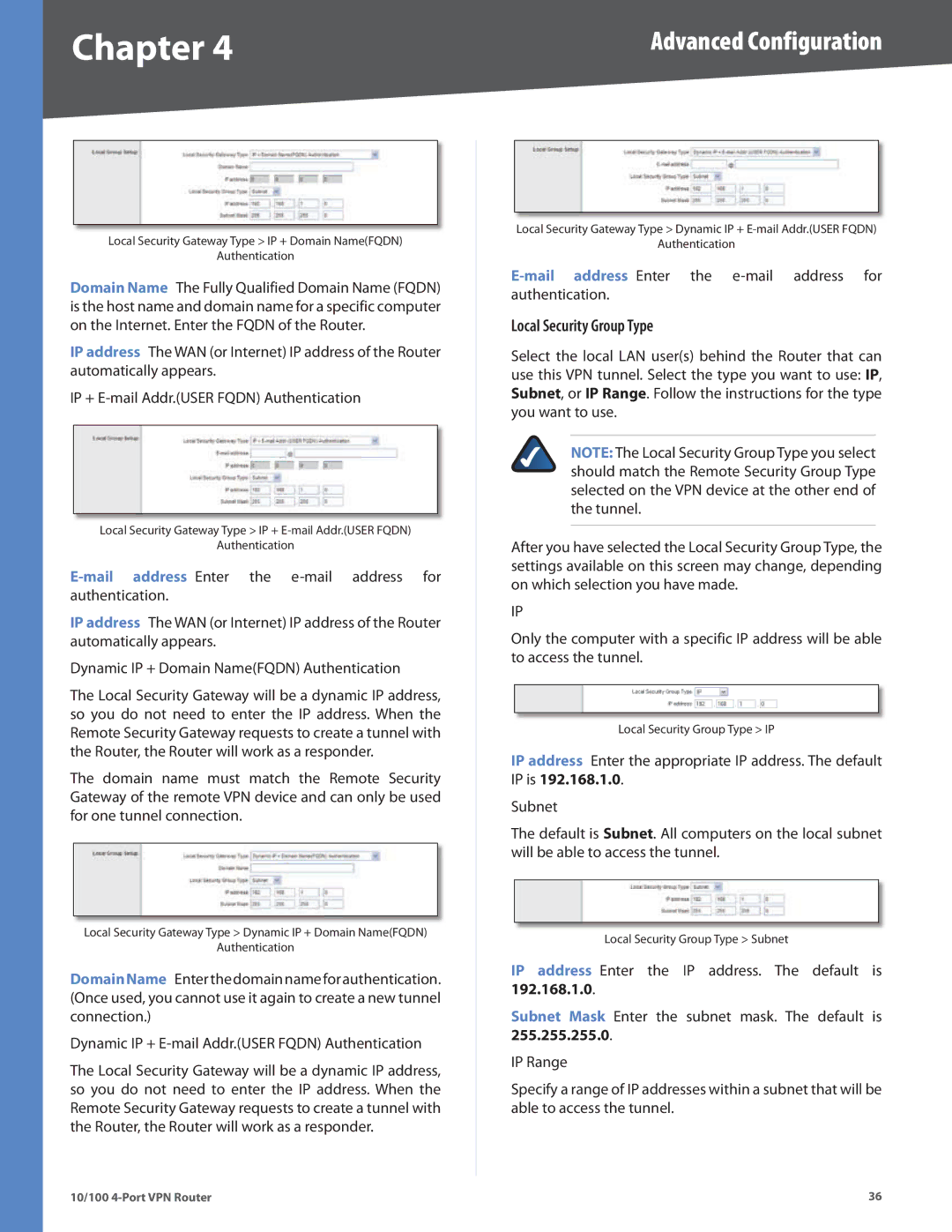
Chapter 4 | Advanced Configuration | |
|
|
|
|
|
|
Local Security Gateway Type > IP + Domain Name(FQDN)
Authentication
Domain Name The Fully Qualified Domain Name (FQDN) is the host name and domain name for a specific computer on the Internet. Enter the FQDN of the Router.
IP address The WAN (or Internet) IP address of the Router automatically appears.
IP +
Local Security Gateway Type > IP +
Authentication
IP address The WAN (or Internet) IP address of the Router automatically appears.
Dynamic IP + Domain Name(FQDN) Authentication
The Local Security Gateway will be a dynamic IP address, so you do not need to enter the IP address. When the Remote Security Gateway requests to create a tunnel with the Router, the Router will work as a responder.
The domain name must match the Remote Security Gateway of the remote VPN device and can only be used for one tunnel connection.
Local Security Gateway Type > Dynamic IP + Domain Name(FQDN)
Authentication
DomainName Enterthedomainnameforauthentication. (Once used, you cannot use it again to create a new tunnel connection.)
Dynamic IP +
The Local Security Gateway will be a dynamic IP address, so you do not need to enter the IP address. When the Remote Security Gateway requests to create a tunnel with the Router, the Router will work as a responder.
Local Security Gateway Type > Dynamic IP +
Authentication
Local Security Group Type
Select the local LAN user(s) behind the Router that can use this VPN tunnel. Select the type you want to use: IP, Subnet, or IP Range. Follow the instructions for the type you want to use.
NOTE: The Local Security Group Type you select should match the Remote Security Group Type selected on the VPN device at the other end of the tunnel.
After you have selected the Local Security Group Type, the settings available on this screen may change, depending on which selection you have made.
IP
Only the computer with a specific IP address will be able to access the tunnel.
Local Security Group Type > IP
IP address Enter the appropriate IP address. The default IP is 192.168.1.0.
Subnet
The default is Subnet. All computers on the local subnet will be able to access the tunnel.
Local Security Group Type > Subnet
IP address Enter the IP address. The default is 192.168.1.0.
Subnet Mask Enter the subnet mask. The default is 255.255.255.0.
IP Range
Specify a range of IP addresses within a subnet that will be able to access the tunnel.
10/100 | 36 |
